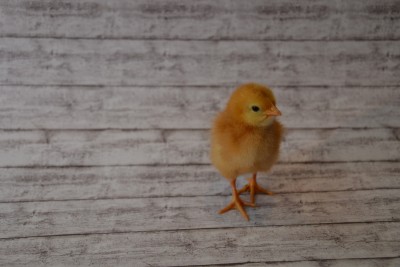Where Have all the Chicks Gone? by Amy Barkley
Amy Barkley, Team Leader & Livestock Specialist
Southwest New York Dairy, Livestock and Field Crops Program

Where Have all the Chicks Gone?
by Amy Barkley, Livestock and Beginning Farm Specialist, SWNYDLFC
It's spring. Birds are calling, the harsh chill is starting to lift. Giddy with anticipation for your spring flock, you go onto your favorite hatchery's ordering page and find out that they are sold out through summer. Concerned, you try your local farm supply store, but there's nothing peeping in their bins - they sold out of their chicks as soon as they got them in this morning. So this begs the question, why can't you get ahold of chicks right now?
It's no surprise that increased input costs of farming have resulted in pricier eggs at the supermarket. To complicate matters, the presence of Highly Pathogenic Avian Influenza has resulted in the death of 10% of the nation's laying hen flock. This setback in production coupled with the holiday demand at the end of 2022 caused the wholesale price of eggs to spike to $5.43/dozen in December. It's recently come down, but these prices are prompting more people than ever to add some chickens to their backyard and for small farms to increase the size of their laying flocks.
While egg laying flocks have been impacted by HPAI, breeder chickens supplying the eggs for meat producing (broiler) flocks have also been affected. The shortage of breeders means a shortage of meat-type chicks for everyone. For larger broiler breeder operations, that means chicks that would normally be made available to small farms and backyard producers may first fill commercial broiler houses instead, limiting their availability. That said, at this point the shortage is localized to different areas of the U.S.. If your hatchery doesn't have broilers in stock, there may be other hatcheries that have them!
Regardless of what type of chicken they hatch or what market they sell into, breeders of chicks must plan their flocks at least a year in advance. For those flocks that are laying eggs for the 2023 hatching season, those breeders had to have been selected and raised in the summer and fall of 2022. So, this year's numbers for hatchery breeder flocks are essentially set. Because companies have to project chick demand a year in advance, it can be challenging to estimate how many hens and roosters to stock in a breeding flock to match demand. Many times, they're spot on, but with bird flu cases and overall demand increasing, demand is outpacing supply. Once the reservations are full, they're full! Sometimes availability opens as orders are cancelled or ship dates are changed, but it's a gamble to wait if you have a plan to raise a certain number of hens or meat birds this year.
So, what can small flock owners do this year to get the birds they need? There are a couple of options.
1.) Explore hatcheries you haven't investigated before. We recommend looking for baby poultry from NPIP-certified flocks, which are tested free of certain poultry diseases and have acceptable, practiced biosecurity protocols. A listing of NPIP-certified hatcheries by state can be found using the clickable map at: https://www.poultryimprovement.org/statescontent.cfm
2.) If you know you will need chicks later in the year, get your reservations in now! Many hatcheries are already selling out through summer.
3.) Consider purchasing straight run chicks, especially for laying strains. Straight run means that 50% of the chicks will be male and 50% will be female. The straight run option tends to sell out slower than the all pullet (female) option, so there may be straight run chicks available sooner than all female chicks.
If your orders are not already placed for the season, it may be challenging to find chicks. But the good news is that hatcheries will pivot and increase production for next year to meet this new demand.
Upcoming Events
Crops, Cows & Critters - Southwest New York Dairy, Livestock & Field Crops Newsletter Sponsorship
December 19, 2025
Our two forms of publications feature research-based and timely information from our four specialists, listed to the right, along with local event notifications and Cornell University outreach. This information is provided to participants who range from dairy, livestock, and field crops producers to agricultural suppliers and consultants.
Weekly Email Update: Shared with 625+ households who have signed up with our program.
Monthly Paper Mailer: To reach our stakeholders and farmers who lack internet access, we send out a monthly mailer where your company's logo and contact information would be featured with a mailing list of 330+ households.
If you sponsor our weekly and monthly publications you reach approximately 955 households.
Visit our website to view our newsletters!
2025 Cornell Food Beverage & Animal Feed Manufacturer Survey
December 19, 2025
Industry and Educational Advocates for New York State's Food, Beverage, and Animal Feed Manufacturing industries:
As you know, NYS has a diverse food and beverage manufacturing industry, in both the types of industries that exist and the wide distribution of firms by scale. Many manufacturing firms have strong backward linkages to agricultural production sectors in the state that support both farm-level and downstream food industry firms and consumers. In collaboration with the New York State Department of Agriculture and Markets, a team from Cornell University's Charles H. Dyson School of Applied Economics and Management has recently rolled out the 2025 New York State Food, Beverage, and Animal Feed Manufacturer Survey. The industry will benefit from an updated assessment of the industry that informs private and public investments and opportunities to support firm growth and improved profitability.
Boots in the Barn: Cornell Dairy Research Updates
January 13, 2026
January 20, 2026
January 27, 2026
February 3, 2026
February 10, 2026
February 17, 2026
February 24, 2026
Join us for some or all!
Announcements
No announcements at this time.





